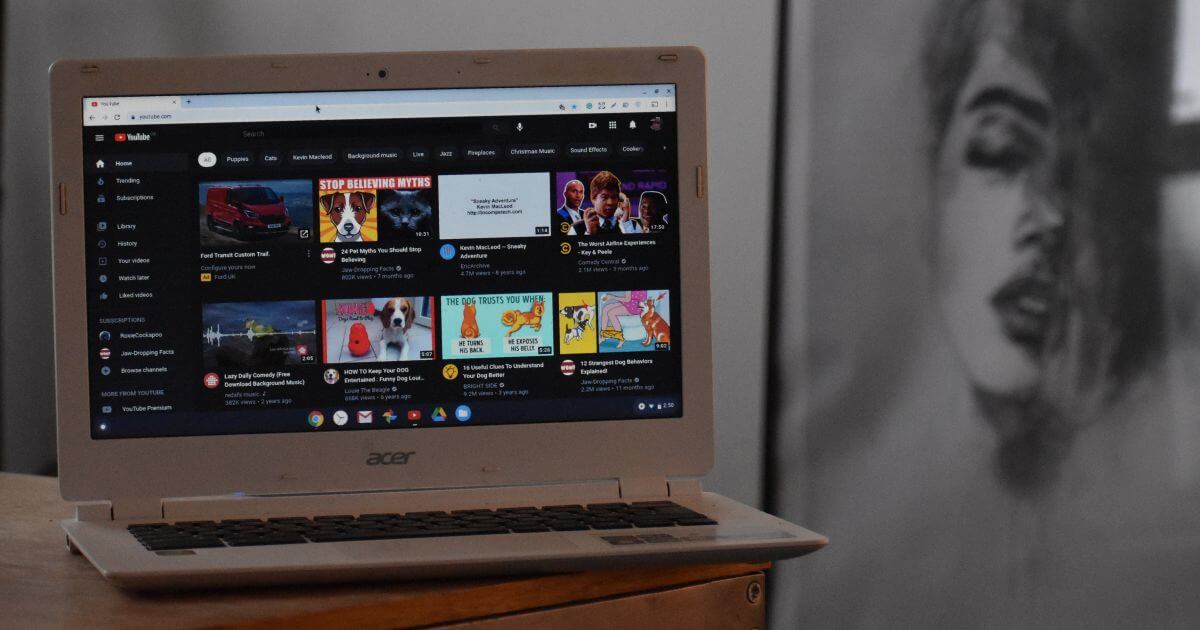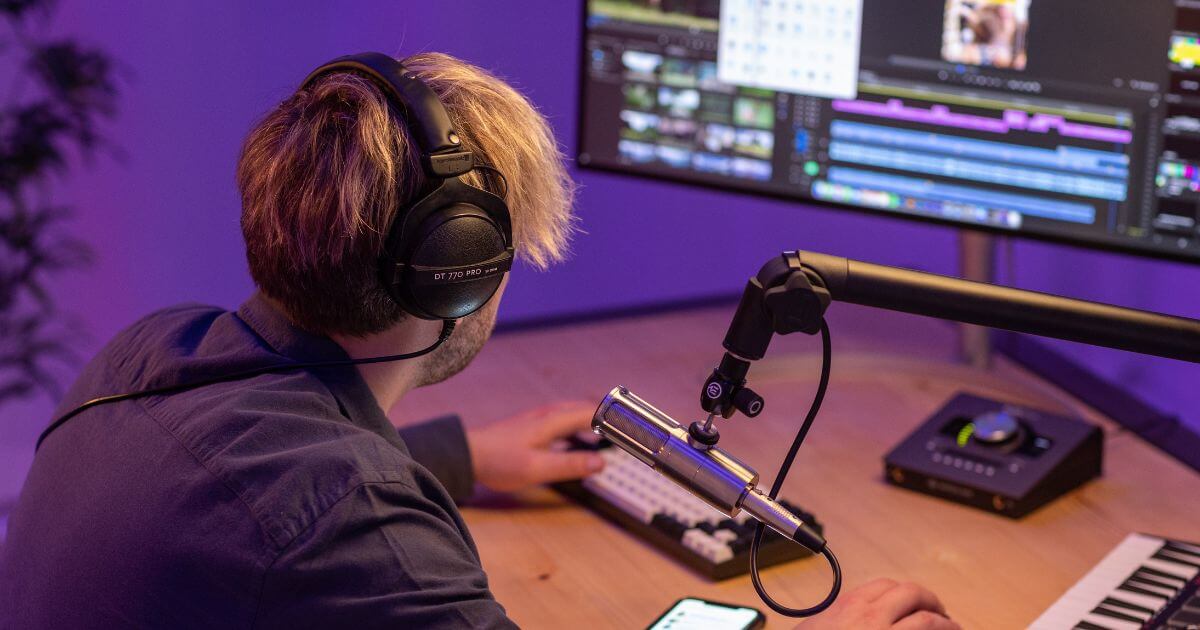How the YouTube algorithm works
YouTube is really big. The total number of monthly active YouTube users is 2.6 billion, which makes it the second most visited social network after Facebook. Just image the number – 1 billion hours; this is the number of hours spent daily watching videos on YouTube.

Where do you think we’re going with this? We are heading straight to the conclusion that YouTube is still (and more likely will continue to be) the most popular platform for a blogger or promoting your product via influencers.
To make the platform work for you, you should know how it works.
Let’s go step by step to see what algorithms are working with YouTube!
What is the YouTube algorithm?
The YouTube algorithm was created to match viewers with the videos they may be interested in (and keep them watching). With over 500 hours of video content being uploaded every minute, even dozens of people would never be able to do this manually. YouTube calls it a real-time feedback loop that tailors videos to each viewer’s different interests.
The system compares your viewing habits to similar videos and uses that information to suggest other content you may want to watch.
How does the recommendation system work?
Recommendations appear in two main sections: The home page and “Play now.” The home page is the first thing you see on YouTube. It provides you with personalized recommendations, subscriptions, and the latest news and information. The “Play now” panel appears when you’re at the end of a video. It offers additional content based on information about what you’re currently watching and content the platform thinks you might be interested in.
The recommendation system uses over 80 billion pieces of information called signals to evolve and learn constantly every day. For example, the system uses your watch and search history (if enabled), channel subscriptions, clicks, watch time, survey responses, sharing, likes, and dislikes.
 Source: Pexels.com
Source: Pexels.comClicks: Clicking on a video provides a strong indication or proof that a viewer finds it satisfying. To get more clicks, come up with an eye-catching title that matches precisely with the video’s content and work hard on a complimentary icon.
Watch time: The recommendation system shows which videos and the duration of each video the viewer watched. This provides personalized signals to the YouTube system about what people most likely want to watch. Longer watch time suggests that the viewer has found a video more valuable.
Survey responses: To make sure people are satisfied with the content they are watching, the platform measures “valued watch time”— the time spent watching a video that people consider valuable. It is calculated through user surveys asking them to rate the video they watched from one to five stars, giving YouTube a metric to determine how satisfying people found the content. Only videos that rate highly with four or five stars are counted as valued watch time. Based on the system’s responses, it trains a machine learning model to predict potential survey responses for everyone.
Sharing, comments, likes, and dislikes: On average, people are more likely to be satisfied with videos they share or like. The YouTube system uses this information to predict the odds a user will share or like other videos. If you dislike a video, that’s a signal that it probably wasn’t something you enjoyed watching.
Likes and dislikes have the same benefit.
Engage your audience in any way you can: joke, ask for their opinion in the comments, post links to previous videos, ask viewers to look for Easter eggs in your videos, “send” people to your other social networks, pin your comment, etc.
Try to insert an animation into several of your videos during editing with a request to subscribe to your channel.
Personal activity signals: Channel subscriptions and watch and search histories are personal activity signals that make it easy to find videos people already like, improving their video recommendations.
Context signals: Context signals are determined by a user’s country and time of day. This helps YouTube show more locally relevant news.
 Source: Unsplash.com
Source: Unsplash.comHere are more signals to explore, especially if you are a content maker:
The frequency of uploads on a channel: The algorithm recommends content from active channels.
How long a video has been online: Newer videos will be recommended to subscribers or viewers with similar interests first.
A video’s growth rate (speed of popularity): Videos with a high growth rate have a better chance of making it onto the Trending page.
Video engagement (likes, dislikes, comments, shares): Engagement shows the interest level in your videos, and the algorithm will then suggest it to more viewers if the engagement level is high.
Impressions: This includes how many viewers see the video suggested to them (thumbnails, etc.), so aim to get as many impressions as possible for the best results.
YouTube Search
On YouTube Search, three main elements provide the best search results: relevance, engagement, and quality. They are given different importance based on the type of search. To estimate relevance, YouTube looks at many factors, such as how well the title, tags, description, and video content match the search query.
Engagement signals are a valuable way to determine relevance. We incorporate aggregate engagement signals from users, i.e., we may look at the watch time of a particular video for a particular query to determine if the video is considered relevant to the query by other users. Finally, for quality, our systems are designed to identify signals that can help determine which channels demonstrate expertise, authoritativeness, and trustworthiness on a given topic. YouTube doesn’t accept payment for better placement within organic search results.
In addition to those three main elements, we strive to make search results relevant for each user, and we may also consider your search and watch history if you have it turned on. That’s why your search results might differ from another user’s search results for the same query. Pictured below are side-by-side examples showing how users’ similar searches can differ based on these factors.
When to post your content?
Audience interest peaks during weekday afternoons, probably when people are on their lunch break. This means that uploading during a weekday afternoon makes sense, so YouTube will have enough time to index and publish videos.
Thursday and Friday are the best days to upload videos because people have time to watch them on weekends.
Saturday and Sunday (from 9 to 11) work well, although the interest decreases on Sunday afternoon.
Before you using the information mentioned above, analyze your channel’s target audience.
For example, if you have educational videos and want to reach a B2B audience, the weekend is not the best time. Perhaps a better option is weekdays so that people can watch videos during or after their lunch break.
There is also a YouTube Studio function for a detailed analysis. It lets you know when the audience is online based on statistics gathered in the last 28 days. You can even check the hours during the week when viewers are active on YouTube.
To access metrics from YouTube Studio:
Click on your YouTube profile picture in the top right corner of any desktop screen.
Click the Analytics link on the left navigation bar on the Studio Dashboard screen.
Click the "Audience" tab at the top of the main analytics screen.
In this control panel, you will see a module labeled “When your viewers are on YouTube.” To be clear, this is not specifically about your followers. These are the statistics about all YouTube users who watch your videos.
We hope our research helps you stay more connected with your audience.
Have any specific topics you want us to cover?
Share your ideas with us